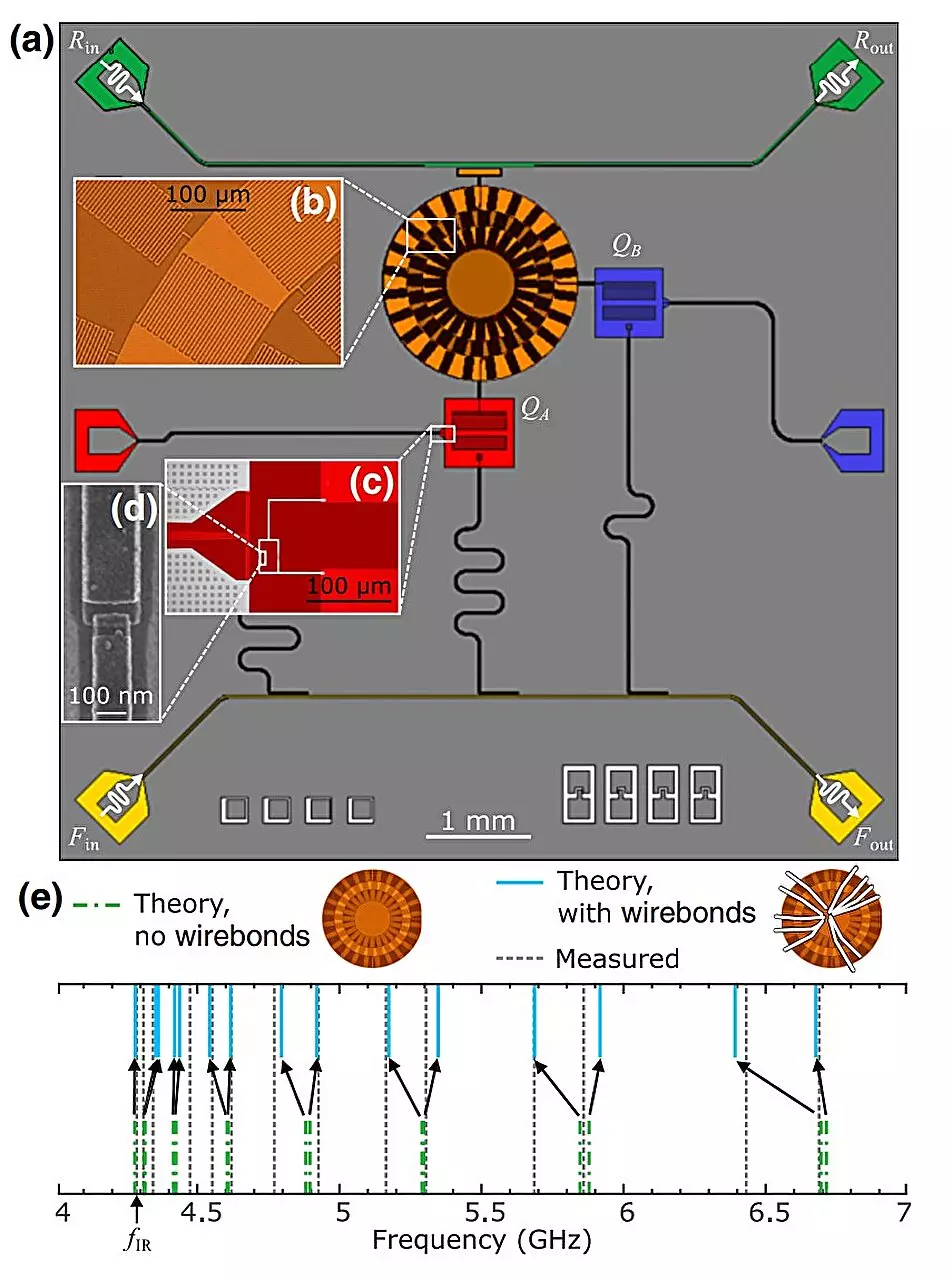The journey toward building a fault-tolerant quantum processor is akin to navigating a complex labyrinth, where each twist and turn presents new obstacles and intricacies. At the heart of this journey lies the fundamental principle of entanglement—something that empowers qubits to perform calculations far beyond the reach of classical computers. However, superconducting qubits, while heralded as a promising technology for quantum information processing, face significant challenges in scaling up. As researchers aim to expand qubit networks beyond small systems, they encounter the need to interconnect vast numbers of qubits with minimal error rates, complicating both the design and execution of such systems.
Traditional coupling methods, which typically link only nearest-neighbor qubits, invoke several limitations. Firstly, the need for pairwise connections leads to an overwhelming requirement for couplers. To express this mathematically, coupling 100 qubits results in the necessity for 4,950 couplers, a staggering figure that highlights the unsustainable nature of conventional approaches. Additionally, managing the control of these numerous couplers often demands an inordinate amount of wiring, making the physical organization of the system not only cumbersome but also impractical as the number of qubits swells into the thousands or millions.
Innovation on the Horizon: The Multimode Coupler Approach
In a groundbreaking departure from traditional coupling strategies, a team of theoretical physicists led by Mohd Ansari at Forschungszentrum Jülich (FZJ), along with the experimental efforts of Britton Plourde’s group at Syracuse University, recently introduced a novel multimode coupler design that alters the landscape of quantum processor architecture. Their innovative approach hinges upon a shared coupler shaped like a ring, which is constructed from a metamaterial transmission line. This cutting-edge design boasts a dense frequency spectrum of standing-wave resonances that resonates near the critical transition frequencies of qubits, opening new doors for efficient couplings.
Imagine the complexities tied to manipulating individual qubits in vast arrays—this design simplifies those operations by allowing tunable coupling strength between any pair of qubits, bypassing the need for the cumbersome infrastructure that plagues traditional methods. The significance of this advancement cannot be understated; by alleviating the constraints of physical coupling, it paves the way for a more nimble and efficient quantum processor.
The Science Behind the Multimode Design
At the core of this innovative coupler is a sophisticated configuration of 24 inductively grounded cells arranged to create a unique left-handed ring resonator. This resonator is characterized by a frequency response that defies classical physics. For example, the relationship between frequency and wavelength in this system diverges from expectations: doubling the frequency results in a doubling of the wavelength, a stark departure from conventional physics where increased frequency traditionally leads to decreased wavelength. This intriguing characteristic can be likened to a musical instrument where the rules of sound are inverted.
Utilizing this ring resonator configuration, two superconducting qubits can be positioned strategically at the 3 and 6 o’clock positions, leveraging the standing-wave patterns generated within the resonator. The strength of the coupling between the qubits hinges critically on the amplitude of the standing-wave at their respective locations. This flexibility not only allows control over the interaction strength—enabling both attractive and repulsive exchanges—but also facilitates higher-order interactions that can introduce complexity and richness to the quantum states of the system.
Transforming Quantum Information Processing
The implications of this multimode coupler approach extend far beyond just additional efficiency in qubit interconnections. By allowing for the tuning of entanglement energy scales and facilitating transverse exchange interactions, this method is poised to alter our understanding of quantum entanglement in systems with increasingly large numbers of qubits. The potential to scale interactions across multiple qubits, all governed by shared resonant modes, signifies a monumental leap toward practical quantum computing applications.
In a world first seeing the dawn of large-scale quantum setups, the move towards adopting such multimode coupling technologies could very well define the future of quantum computing. As researchers grapple with the age-old challenges of bottlenecks and inefficiencies, innovations like these provide a beacon of hope, illuminating a path toward a robust, scalable quantum landscape capable of revolutionizing industries ranging from cryptography to drug discovery. With the right advancements, the limits of quantum computation are only just beginning to be unearthed.

